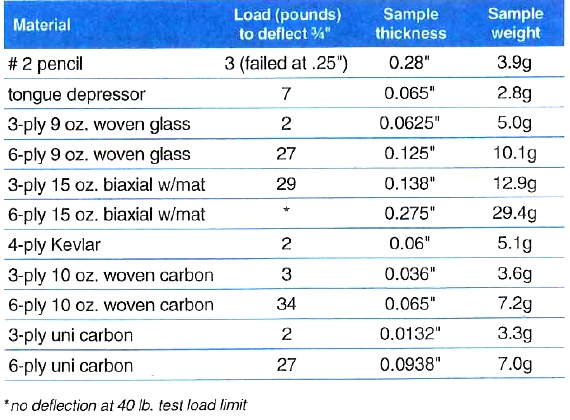
By Captain James R. Watson
The appropriate laminate thickness for a particular application is difficult to come up with out of the blue. We have a “feel” for how strong something must be to suit our purposes. Our hands are fairly sensitive for detecting slight load increases, up to about 30 pounds. We can use them to evaluate a variety of materials. The only problem is, we don’t know the numerical equivalent of the pressure we’re applying.
How strong is a common wooden pencil? We can get a feel for its stiffness by holding it and exerting pressure to make it deflect. Our two thumbs serve as a nicely padded and smooth-radius fulcrum, and our fingers (spaced an equal distance from the center) provide simple support at the pencil’s ends. If we exert enough pressure, it will break. This is essentially a three-point bending test. Let’s use this test to gauge the stiffness and strength of similarly sized sticks of various materials, using our experience with the pencil for comparison. For example, a wooden (birch) tongue depressor is not as stiff as a pencil. It bends much further than a pencil before it fails, and breaking it takes about triple the effort.
I used a load cell to give a numerical value to the load exerted (using this three point bending method) on an assortment of composite materials from which we might fabricate small parts (such as the compass hoods in the previous article). All were bonded or laminated with a mixture of WEST SYSTEM 105 Epoxy Resin and 206 Slow Hardener. The chart lists the material, how many pounds it took to deflect the sample ¾”, the sample thickness and sample weight. All samples (except the # 2 pencil) were the same length and width as a tongue depressor (6″x¾”).





